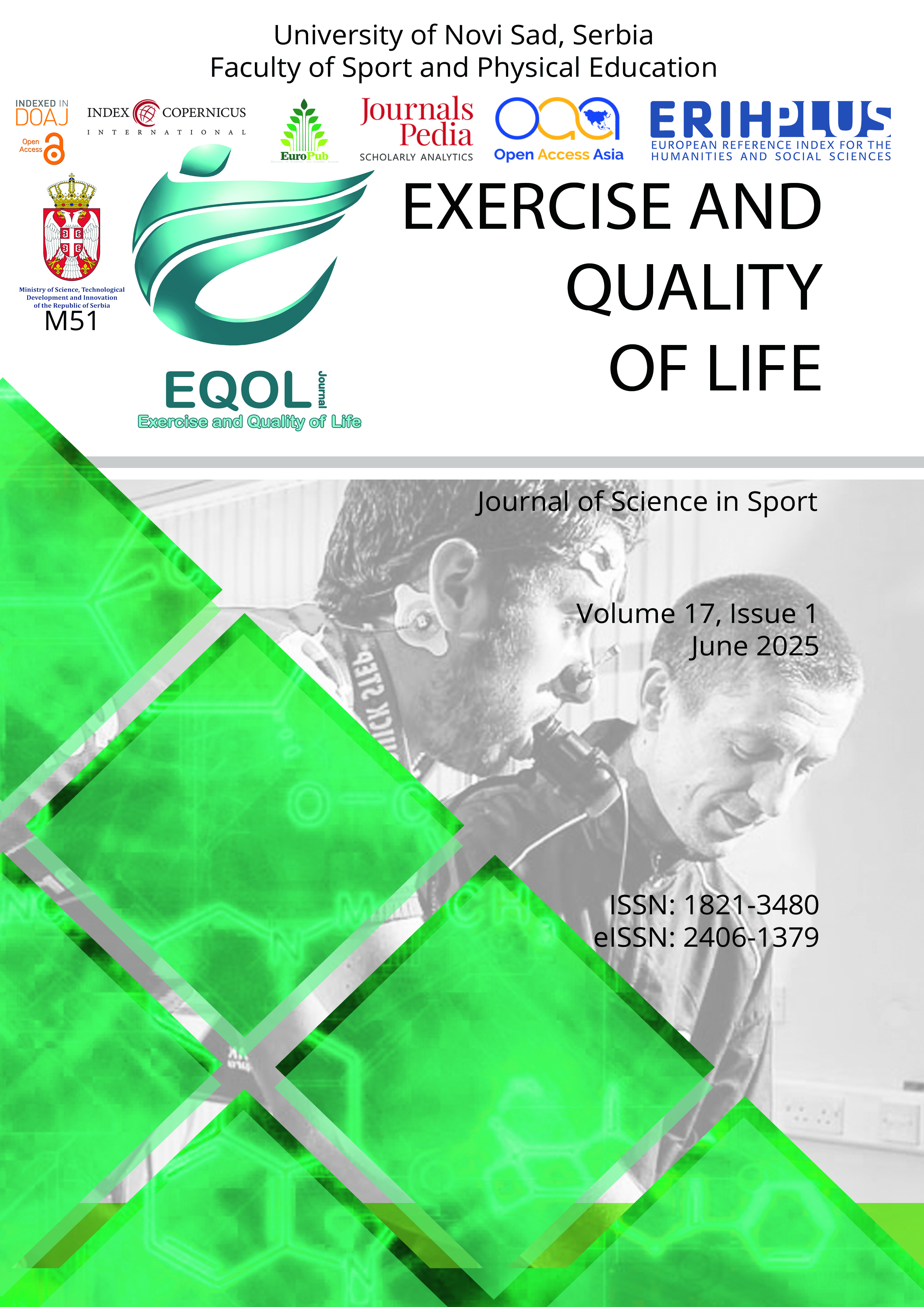Current issue

Volume 17, Issue 1, 2025
Online ISSN: 2406-1379
ISSN: 1821-3480
Volume 17 , Issue 1, (2025)
Published: 15.06.2025.
Open Access
All issues
Contents
15.06.2024.
Original scientific paper
Correlation between acute muscle damage and oxidative protection enzymes during different aerobic exercises
Different types of aerobic exercise can cause different disorders of homeostasis. This cross-over experiment aimed to determine the muscle fatigue and the antioxidative protection of female basketball players following a load caused by three different aerobic-type exercises (low-intensity continuous, high-intensity continuous, and high-intensity interval training). Twelve female basketball players (age 17.7±4.3 years; weight 67.3±9.8 kg; height 178.0±7.4 cm) voluntarily participated in the study. A wash-out period of 7 days between single sessions of different training was provided. Venous blood was drawn right before and immediately after each exercise session. The parameters that were analyzed are markers of muscle damage and enzymes of antioxidant protection. As a marker of muscle damage, myoglobin (F=2.884; p=0.065) and lactates (F=5.254; p=0.008) have higher values and statistically significant differences between training types. Creatinine shows higher values after each training session (F=4.053; p=0.022). Results of enzyme activity for oxidative protection show statistically significant differences between groups for catalase (F=5.811; p=0.005) with different types of training intervention. At the beginning of the preparatory period, parameters of acute muscle damage values are high. During the season, in response to different types of training, those parameters decrease in response to the body's adaptation to exercise-induced stress. Training leads to maintenance of physiological balance in the body and oxidative stress is not a necessary phenomenon of high aerobic training load. The inclusion of antioxidant protection enzymes decreases as the body adapts to a certain type of exercise.
Bojana Marić, Sandra Vujkov
14.06.2022.
Professional paper
Serum creatine-kinase and extended breastfeeding: Case study
The World Health Organization recommends infants should be exclusively breastfed for the first six months of life. Various factors can affect the maintenance of lactation. Increased physical activity and stress are thought to negatively affect breastfeeding success. The aim of this case study was to examine the effect of high serum creatine-kinase (CK) values and the success of breastfeeding after sports competition. It is assumed that continuous aerobic exercise is a stress for the body that can have a negative impact on lactation and extended breastfeeding. Methods. The level of acute muscle damage (AC) was measured before and after the competition in order to confirm continuous exposure to aerobic exercise. Results. After the competition, elevated serum creatine-kinase levels were noted. Prolactin and TSH values remained within optimal values. Conclusion. Several months of preparation for the competition had an impact on increasing acute muscle damage (AC) after the competition. No negative effect of continuous aerobic exercise on breastfeeding success was observed in this case study.
Ksenija Bubnjević, Bojana Marić, Dušan Stupar, Dragan Grujičić























